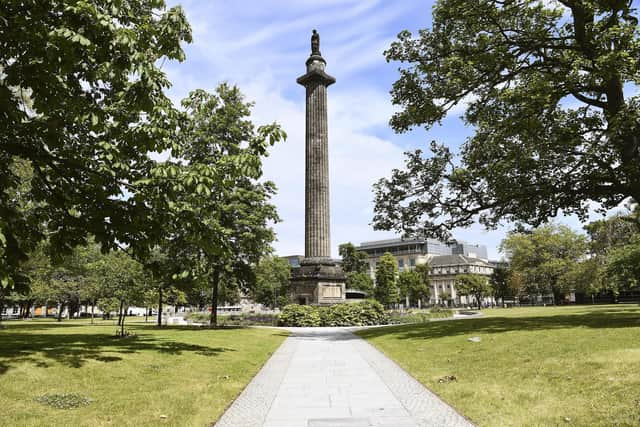Edinburgh statue row: Descendant of Henry Dundas refuses to return plaque taken from Melville monument
and live on Freeview channel 276
The descendant of Henry Dundas behind the removal of a plaque linking him to slavery has said he will not return it to the council after being threatened with legal action – but agreed to repair damage to the Melville Monument.
Bobby Dundas, the seven times great-grandson of the controversial 18th century politician, said the Melville Monument Committee (MMC) – a group he leads which claimed responsibility for the brass plate’s disappearance last month – was “in discussions with the city”. He added that the local authority have “no ownership rights” over the plaque and that it belonged to the owners of St Andrew Square “who we are in communication with on that matter”.
Advertisement
Hide AdAdvertisement
Hide AdBut council leader Cammy Day hit back saying it “belongs to the council and has been removed without our permission”. He added that an official report had now been filed with the police “following the refusal of our request to return the plaque”.


Attached to the base of the 150ft column topped by a statue of Dundas, it states the viscount was “a contentious figure, provoking controversies that resonate to this day”. It adds: “While Home Secretary in 1792 and first Secretary of State for War in 1796 he was instrumental in deferring the abolition of the Atlantic slave trade… as a result of this delay, more than half a million enslaved Africans crossed the Atlantic.”
The plaque was installed by the council following Black Lives Matter protests in 2020, during which the monument was vandalised, to provide “a more representative story of Henry Dundas”. But the wording was described as “misleading,” “cartoonishly inaccurate” and “hurtful to our family” by his living relatives who took it upon themselves to remove it on September 20.
Police were then asked to investigate by a city councillor but said “no criminality was established” following an initial investigation. In a statement issued last week Edinburgh Council said it was “in legal correspondence” with Bobby Dundas and the Melville Monument Committee who had “been instructed to return the plaque and present a proposal to make good any damage to the monument caused by removal”.
Advertisement
Hide AdAdvertisement
Hide AdThe council said it “may consider legal action or further involving Police Scotland” if their demands were not met. In response, Mr Dundas told the Local Democracy Reporting Service: “The MMC have taken senior expert legal advice and are confident that we took all proper steps before removing the plaque. The MMC intends to continue to honour its legal obligations.”
He said the group was waiting to see if the authority “honours its own legal obligations,” including removing ‘temporary’ signs installed near the Melville Monument, which the council said at the time would “be in place whilst the permanent plaque is being created” but still remain in St Andrew Square.
He added: “The city gave an undertaking to remove them nearly three years ago, but is now treating them as a permanent installation, contrary to planning requirements. The plaque was affixed to heritable property by the council, on the faith of an improperly obtained planning permission. By being affixed, it became part of the heritable property. It is accordingly not the property of the council.”
In March the MMC was granted listed building consent to take the plaque down, with the council clarifying soon after that it was approved “on a technicality” and that as the application wasn’t from the owner of the statue it couldn’t be removed. Mr Dundas continued: “MMC has planning permission, properly obtained, to remove the plaque, which it has done. The four small holes in the monument were caused by the council, but it is a condition of MMC’s Planning Permission that MMC repairs them. MMC is happy to do that. It is ten minutes’ work.”
Advertisement
Hide AdAdvertisement
Hide AdCouncillor Day said: “The plaque belongs to the Council and has been removed without our permission. Following the refusal of our request to return the plaque, we’ve now filed an official report with Police Scotland and will leave them to investigate fully.”